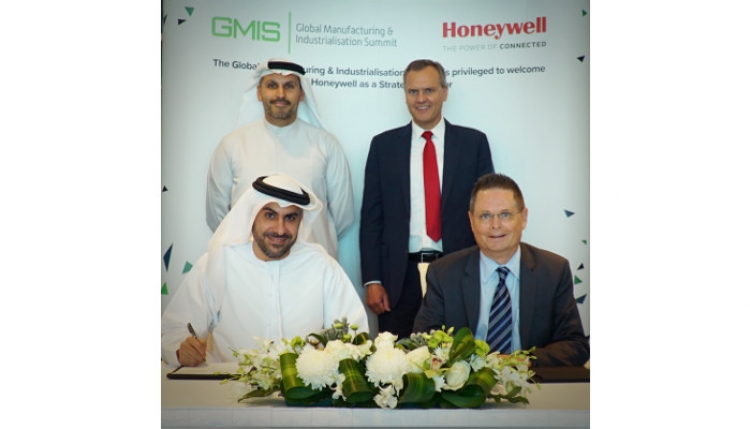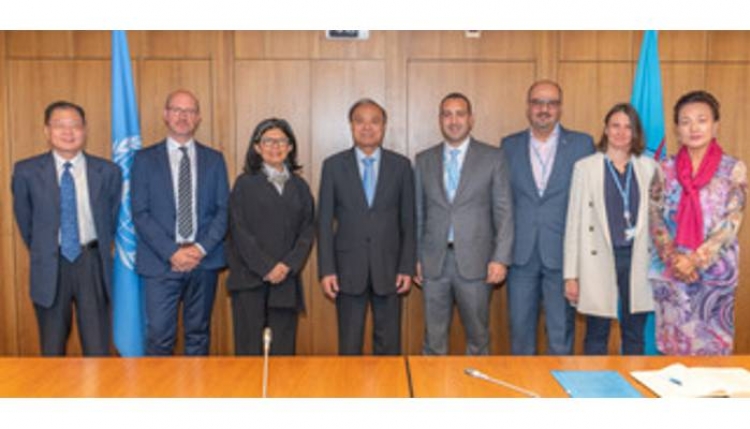Abu Dhabi - MENA Herald: In the run-up to the Global Manufacturing and Industrialisation Summit which opens in Abu Dhabi this week, we look at 10 of the top trends that are changing manufacturing as we know it.
From flying taxis to industrial robots, automation is rewriting the rules of traditional manufacturing. Consumers want more products, more quickly and expect ever greater choice, and so the entire supply chain ecosystem is transforming. In tandem, in the public sector policymakers are grappling with solutions to global problems of dwindling economic growth, rising inequality, and job creation for growing and increasingly urbanised populations.
As consumption rises in developing nations and demand for more variety grows in developed economies, global manufacturers will have new opportunities to scale their businesses and help address and, ideally solve, the world’s pressing problems – from food security, to antibiotic resistance, to climate change. But the extent to which they can adopt the drivers of the new manufacturing era will determine whether they succeed or fail. We examine what is driving the dynamic new world of manufacturing.
1. The world is entering the Fourth Industrial Revolution, or 4IR, building on the First Industrial Revolution when water and steam power mechanised production, the Second Industrial Revolution when electric power created mass production, and the Third Industrial Revolution when electronics and information automated production.
Now, 4IR, characterised by digitisation, is blurring the lines between the physical and virtual spheres. It is the era of cyber-physical systems, in which the march of technology and innovation is disrupting every sector of the global economy and transforming how people live and work.
2. The factory of the future is on the way, characterised by the Internet of Things, or IoT. This is a data-driven connected environment where all internal and external activities are linked through the same information platform. IoT intelligently connects people, processes and data through devices and sensors. Data is transferred across networks without the need for human interaction.
The application of IoT is proliferating. In the aerospace sector, sensors are collecting and analysing manufacturing information to detect production problems in real time, improving the quality of output from the manufacturing floor. In cities, IoT is cutting congestion through better traffic management. In homes, it is saving money on energy bills. On farms, IoT is guaranteeing higher-quality crop yields. In hospitals, it is empowering physicians to track patients’ progress in real time through wearable devices, ushering in a new era of personalised healthcare.
3. Humans and machines are interacting more seamlessly on the factory floor, with highly functional robotic equipment carrying out complex tasks and sophisticated sensors gathering information that speeds up and improves the process of production. The emergence of so-called collaborative robots, or co-bots, is opening the door to more human-robot partnerships, with robots working hand-in-hand with their human colleagues. On factory floors, robotic arms are helping workers to load machines, robotic trucks are restocking shelves and workstations, and flexible robots feed parts directly from manufacture into packaging, dramatically reducing human handling. The result is increased productivity, freeing up human workers to perform other tasks.
4. Augmented reality enables factory floor workers to follow instructions delivered through text, graphics and audio superimposed onto goggles or real assemblies to perform complex tasks. For example, engineers at Lockheed Martin no longer need years of training before assembling F-35 aircraft. By wearing augmented reality glasses that use cameras, depth sensors and motion sensors to overlay images onto the real working environment, engineers can see renderings of cables, bolts, parts, part numbers and instructions for how to assemble a particular component. The move has dramatically increased engineers’ accuracy and speed.
5. Industrial manufacturers are applying 3D printing technology, or additive manufacturing, to product development and prototyping to spur innovation and reduce time-to-market. Additive manufacturing is a process of making three-dimensional solid objects from a digital file. The process has several applications. In healthcare, 3D printing is used to print organs from a patient's own cells, reducing the time patients have to wait for donors. In automotives, engineers use 3D printing to save time in prototyping parts for vehicles. Dubai’s ‘Office of the Future’ is the first 3D-printed office in the world, and in Abu Dhabi, Siemens and Strata have partnered for a pilot project that will develop 3D printing solutions for aircraft cabin interior products, that will be used by the UAE’s national carrier, Etihad.
6. As industry and government regulations tighten, and technology improves, expectations for higher-quality products are growing. For example, in autonomous transport, responsibility in the case of an accident caused by a driverless car requires legal clarity. In broadcasting, digital platforms are circumventing cable delivery which often requires a viewer licence or subscription. Ride-hailing services like Careem and Uber are disrupting traditional taxi services. It is important that government regulation does not stifle innovation while, at the same time, applying the required checks-and-balances framework.
7. More ‘day-to-day’ factories will adopt automation and data gathering as the shift towards ‘smart’ manufacturing continues and manufacturers realise that, without advanced analytics systems, they risk being outpaced by more innovative competitors. The integration of ‘smart’ manufacturing technologies into manufacturing processes can control energy, productivity and costs through real-time monitoring; maximize talent and productivity by strategically deploying labour across the business; predict failure so that system downtime can be reduced, and streamline processes through advanced modelling and simulation.
8. Technology-powered manufacturing, or 4IR, is helping to close the gap between rich and poor, lift nations out of poverty, find new cures for diseases, end water and food shortages, and to create new jobs in every sector of the global economy. For policy makers, the challenge is to help create an ecosystem - through skills investment, taxation, research and incentives - that incubates manufacturing and gives it the space to flourish. Digital tools can be deployed to tackle global problems and catalyse sustainable industrial growth through job creation.
9. Manufacturers are realising the scale of the global industrial internet market, with GE predicting that it will top US$225bn by 2020. GE’s software-rich wind turbines, medical imaging systems, lighting fixtures, appliances, jet engines, locomotives and other internet-connected ‘things’ generate reams of data which the company and its customers analyse to improve system uptime, cut costs and deliver other positive business outcomes.
10. Cities, especially those like Dubai and Abu Dhabi which embrace innovation, know that they must become ‘smarter’ if they are to engage with their citizens, including in the design and delivery of public services. By 2025, 25 per cent of Dubai’s buildings will be 3D-printed. By 2030, 25 per cent of journeys will be driverless. Across the world, the pubic and private sector are exploring ways in which technology can help cities to run more efficiently, and help to save time and costs for citizens, for example by using data to reduce traffic congestion and journey times, and to enhance access to and integration of public services.
The inaugural Global Manufacturing and Industrialisation Summit will be held at the Paris-Sorbonne Abu Dhabi, UAE, from March 27-30, 2017. A joint initiative by the UAE Ministry of Economy and the United Nations Industrial Development Organization (UNIDO), and co-hosted with the Abu Dhabi Department of Economic Development, the Summit will be held under the patronage of His Highness Sheikh Mohamed bin Zayed Al Nahyan, Crown Prince of Abu Dhabi and Deputy Supreme Commander of the UAE Armed Forces. The Summit is the world’s first global gathering for the manufacturing community, bringing together decision-making leaders from governments, businesses and civil society organisations to shape a vision for the sector’s future.




